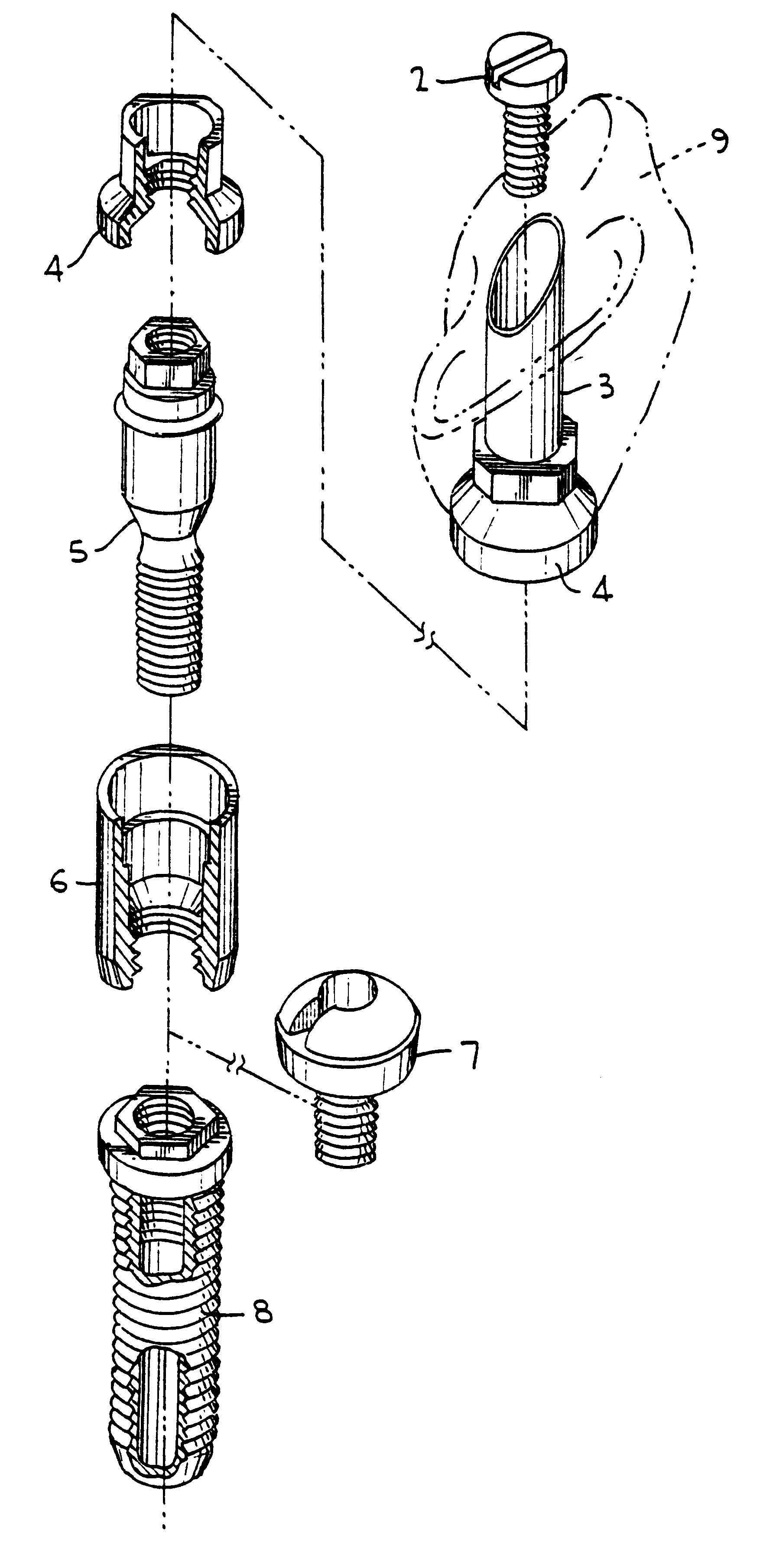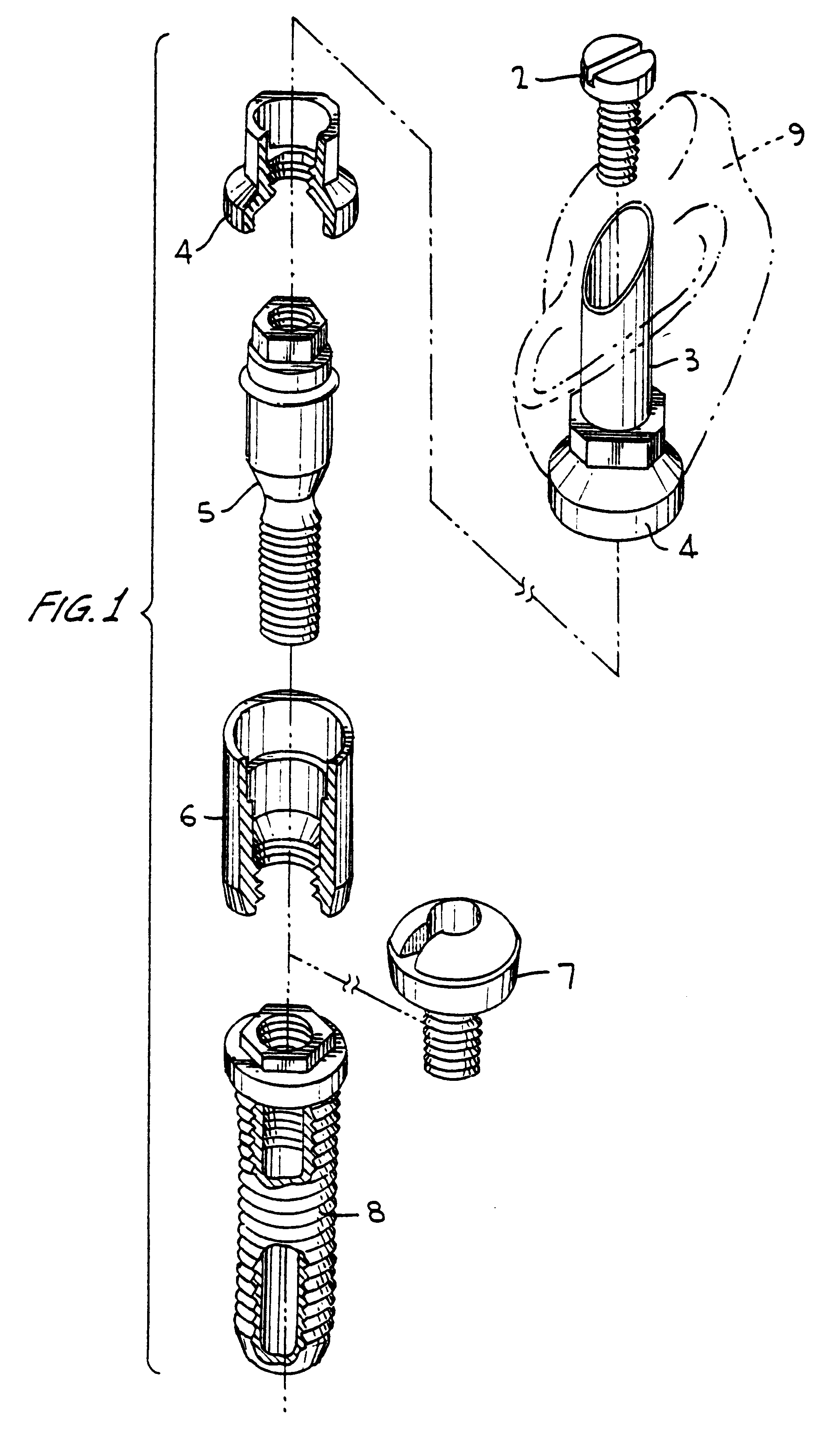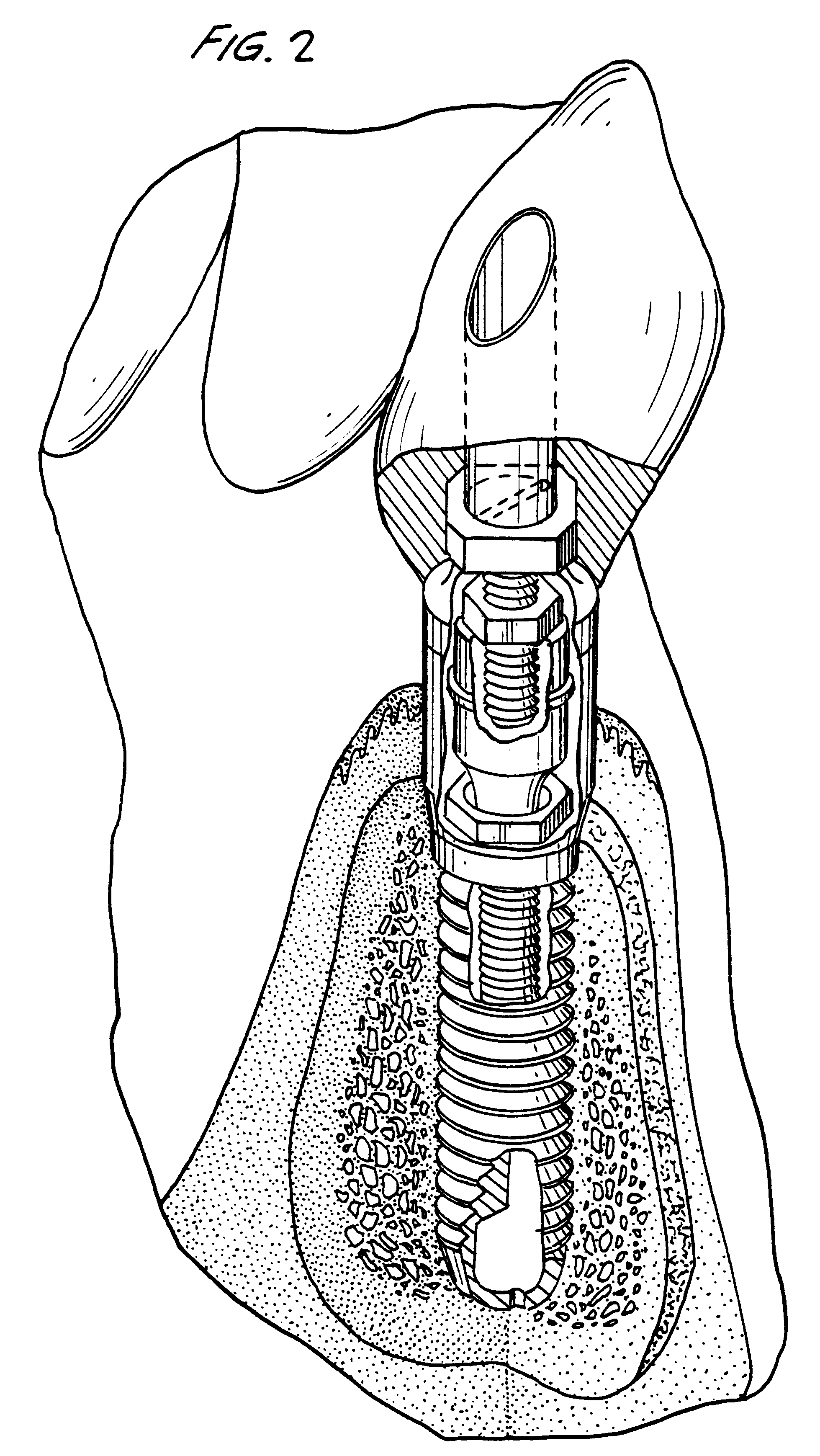Titanium material implants
a titanium material and implant technology, applied in the field of titanium material implants, can solve the problems of excessive tissue response, patient discomfort and pain, and loose (or unstable) implants that may not function efficiently or cease to function
- Summary
- Abstract
- Description
- Claims
- Application Information
AI Technical Summary
Problems solved by technology
Method used
Image
Examples
example 1
Using commercially pure titanium (which is hereinafter referred to as CPT) coupons, three different treatments were performed. They included (a) chemical treatment (by 5 mol NaOH at 70.degree. C. for 24 hours), (b) chemi-thermal treatment (5 mol NaOH at 70.degree. C. for 24 hours, followed by in air oxidation at 600.degree. C. for 1 hour), and (c) double chemi-thermal treatment (mixed acid HF / HNO.sub.3 / H.sub.2 O by 1:1:2 volume, followed by 5 mol NaOH at 70.degree. C. for 24 hours, furthermore followed by in air oxidation at 600.degree. C. for 1 hour). The TED results indicated that all differently treated surfaces of CPT were covered with dominantly rutile mixed with anatase and / or brookite crystalline structures. Results on contact angle measurements showed that 27.degree..+-.5.degree. for (a) treatment, 15.degree..+-.3.degree. for (b) treatment, and 10.degree..+-.4.degree. for (c) treatment, respectively. These contact angles were averaged over 24 data points (four different med...
example 2
Using Ti-6Al-4V alloy samples, all samples were treated in the same way as (a), (b), and (c) as described in EXAMPLE 1 for CPT samples. It was found that (1) all samples were covered with dominantly rutile type titanium oxide mixed with anatase and / or brookite type crystalline structures, (2) the average contact angle was 22.degree..+-.6.degree., and (3) the average surface roughness was 0.35.+-.0.07 .mu.m. These surfaces provide excellent surface condition for successful osteointegration as results of EXAMPLE 1 indicate.
example 3
Using TiNi alloy samples, all samples were treated under the same conditions used for EXAMPLE 1 or 2. It was found that (1) all surfaces were covered with dominantly rutile crystalline structure mixed with anatase and / or brookite structures, (2) the average value of surface contact angle was less 17.degree..+-.4.degree., and (3) surface roughness was averaged at 0.3 .mu.m. These surfaces are excellent for osteointegration mechanisms.
PUM
 Login to View More
Login to View More Abstract
Description
Claims
Application Information
 Login to View More
Login to View More - R&D
- Intellectual Property
- Life Sciences
- Materials
- Tech Scout
- Unparalleled Data Quality
- Higher Quality Content
- 60% Fewer Hallucinations
Browse by: Latest US Patents, China's latest patents, Technical Efficacy Thesaurus, Application Domain, Technology Topic, Popular Technical Reports.
© 2025 PatSnap. All rights reserved.Legal|Privacy policy|Modern Slavery Act Transparency Statement|Sitemap|About US| Contact US: help@patsnap.com



